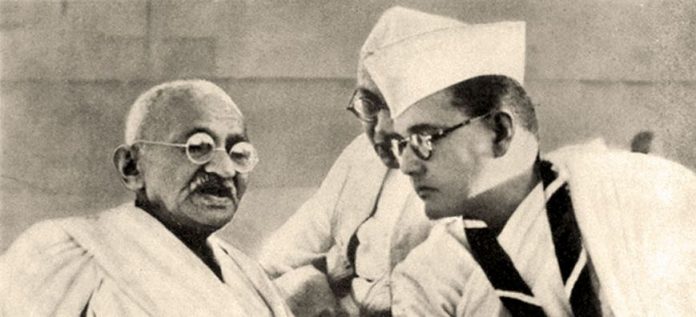Government of India Act, 1935

In this article, Saksham of UPES discuss the features of Government of India Act, 1935.
INTRODUCTION
The Government of India Act was passed by the British Government in the year 1935. It was one of the lengthiest Acts at that time as it contained 321 sections and 10 schedules. Once the act was passed the government saw that it was too lengthy to be regulated with efficiency and thus, the government decided to divide it into two parts for the act to function in a proper manner:
- The Government of India Act, 1935
- The Government of Burma Act,1935
The act gave new dimensions to the affairs of the country by the development of an All India Federation, Provisional autonomy and the removal of the dyarchy. It was also the last constitution of British India, before the country was divided, in 1947, into two parts-India and Pakistan. The act was implemented and formed from the sources like the Simon Commission Report, the three roundtable conferences etc. which were earlier declined by the government. The Act proposed various amendments in context to the act earlier framed in the year 1919.
HOW DID THE ACT COME INTO FORCE?
- The Government Act of 1919, was not satisfactory at all and was too short in its provisions for the self-government form to be imposed in the country. The provisions of the act were not enough to fulfill the National Aspirations that the people of the country aspected. After which, a lot of discussions took place which also led to the Rowlatt Act in the same year. When the Simon Commission Report came out it was seen that the report was not satisfactory which would lead to the consultation with the then Indian Community Representatives at the Round Table conference, held in London.
- The matter was important and was discussed in the round tables of 1930, 1931, and 1932 respectively.
- On the basis of the report generated by the the government, it constituted a committee consisting of 20 representatives from the British India (which consisted of 7 members from Indian states which included 5 Muslims) afterwards, which discussed in the session which started in 1933 and after a lot of debate upon the topic and white papers, gave its report at the end of 1934 stating to pass the act.
- After which the matter went to the parliament and the parliament gave its assent to pass the act and which was passed in the year 1935 and came to be known as the Government of India Act, 1935. The provisions and the material for the act were mainly derived from the Nehru Report, Lothian report, Simon Commission Report, the White papers, the Joint Selection Commission Report to form the act. One of the reasons for the enactment of the act were the Indian Leaders who urged and fought to bring reforms in the country through these acts.
IMPOSING DYARCHY AT THE CENTRE OF THE GOVERNMENT
- Dyarchy basically means the double form of government or dual form and it was first imposed in the year 1919 by the government of India act for the administration of policies by the British government.
- Under the act, it basically implied that the executive authority is governed by the Governor-General on behalf of the crown who was advised by 3 councils of ministers on matters related to it.
- The Dyarchy has divided into parts the Reserved and the Transferred depending upon the subject matters related, they were categorized respectively.
- The provisions were divided under the heads of the advice of the ministers and the councilors. The idea of dyarchy was imposed so that better administration could be done and the governor general was appointed to look after and coordinate among the two parts of the government.
- The act also gave a new dimension by making it a Federal form of Government. Also, the viceroy is vested with certain overriding and certifying powers in this under the Secretary of State for India. The main purpose of imposing dyarchy was to bring stability and efficiency at the center. So that the flaws that were there in the Act of 1919 could be corrected.
WHAT IS THE IMPORTANCE OF THE ACT?
The act holds great importance in the Indian history and some points are stated below which define its importance:


- The introduction of the act ended the dyarchy system by giving more freedom to british India for better governance in the form of Provincial Autonomy and established at dyarchy at the center,
- There was a division of the federal Subjects between the Centre and the provinces, as the division made in the act of 1919 was revised,
- This act is of utmost importance because it leads to the Relationship of a Dominion Status which urged the need for Independence again in the minds of the people,
- The main provision of the act was to make the Governor General Pivot of the constitution to settle if there were any disputes among the people,
- An important provision of the act was the protection of minorities such as women etc. and safeguarding their rights.
WHAT ARE THE FEATURES OF THE ACT?
The Salient Features of the act are as follows:
- The most important feature of the act was that it introduced a dyarchy at the central level in the government,
- The act mainly focused to fulfill the National Aspirations,
- The act gave a measure to form a federal form of government and an all India Federation,
- The act involved the making of a federal form of Government in India which is still prevalent in our Indian constitution by dividing the central and its units under 3 lists as- (Federal List, Provincial List, and Concurrent list)while the residuary powers were with the viceroy,
- There was the separation of states which lead to the creation of two new states -Sindh and Orissa.
- The act extended the Franchise by giving 10% voting rights to the public which was a great extension of rights to the people,
- The act provided for the establishment of a federal court which was done in 1937.
- The act abolished the Indian Council and made provision for the introduction of an advisory body in India,
- The act re-organized certain provinces such as separating Burma from India,
- To control the credit flow in the economy it leads to the establishment of the Reserve bank of India to control the currency in the country.
WHY DID THE ACT FAIL?
The act had so much to promise to the people for their welfare but was not able to deliver anything that could turn out in its implementation. The act was a complete failure and the main reasons why the act failed have been discussed below:
- The concept of an All India Federation failed completely because the Indian National Congress never came for the accomplishment of the plan which was made because of the representation power of the princely states was still in the hands of the British so the concept could not be implemented.
- The act failed to provide flexibility to the people at the constitutional level in regard to their amendments of rights as the power to change or alter any right was present with the British government while the Indians could not do anything according to their needs.
- The act failed to provide a proper federal structure, majority of the power was with the governor general who was not at all responsible for the central legislature which meant that the legislature was not governed properly.
DIFFERENCE BETWEEN THE GOVERNMENT ACT OF 1935 AND 1919:
| GOVERNMENT OF INDIA ACT 1935 | GOVERNMENT OF INDIA ACT 1919 |
| 1)The act did not talk about the preamble. | 1)The act provided for a preamble. |
| 2)The Act was passed by the British government. | 2)The Act was passed by the U.K government in 1919. |
| 3)It was the last constitution of the British era. | 3)It was not the last constitution of the British government. |
| 4)The concept of Bicameralism was introduced in some provinces of British India. | 4)The concept of Bicameralism was not there at the time of such provinces. |
| 5)There was the distribution of power among various people to accomplish their goal of a federal India | 5)There was almost no distribution of powers as the head had the power to take all the decisions on his own. |
CONCLUSION
- The Government of India Act, 1935 was a major step towards the Independence of India and helped in the reorganization of the states such as Sindh was separated from the province of Bombay, similarly Bihar and Orissa were separated, Aden which was earlier a part of the country was separated and was then made a new crown colony.
- The Government of India Act was a total failure as it was not able to give what it had proposed.
- The concept of dyarchy that was brought proved to be wrong and also the act was opposed by the Indian National Congress and the Muslim League.
- Due to the lack of provision of a central government, it was not good for the Indians and there were many flaws in the act that was in a way hampering the rights and morals of the people. Even Honorable Jawaharlal Nehru said that the act for Indians seems like-” Driving a car with all breaks but with no engine ”.
LawSikho has created a telegram group for exchanging legal knowledge, referrals and various opportunities. You can click on this link and join:




